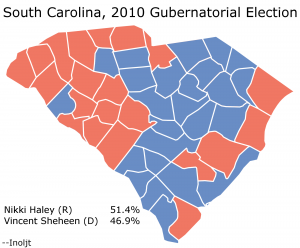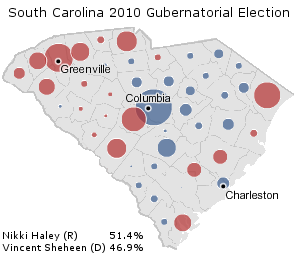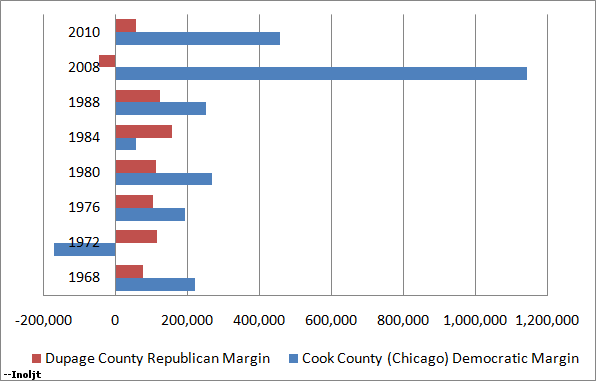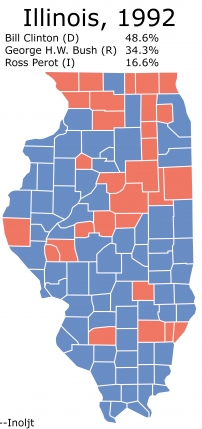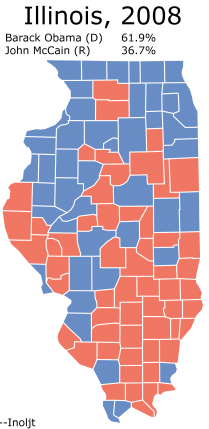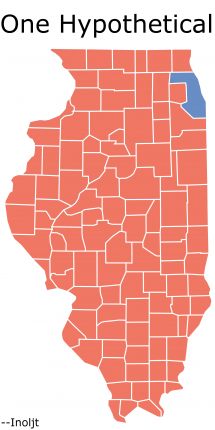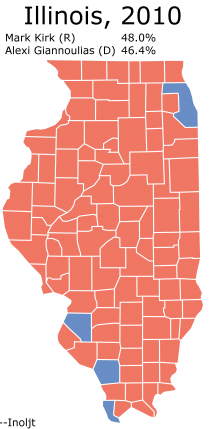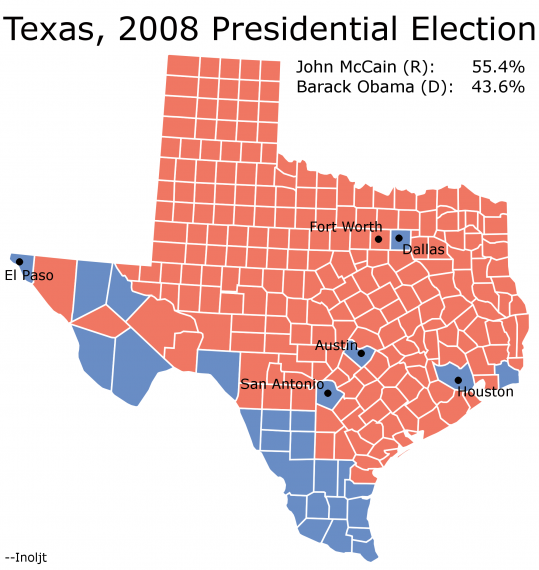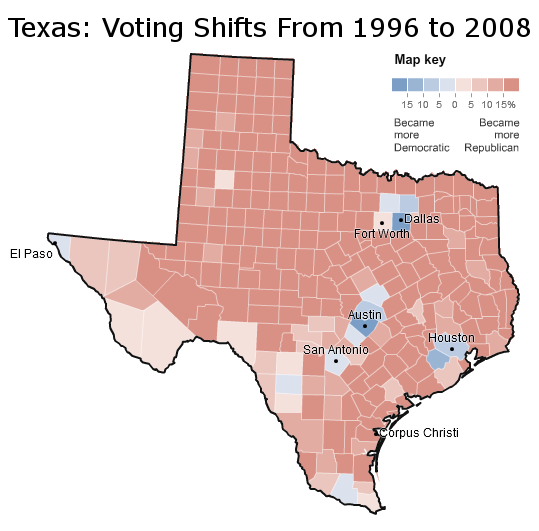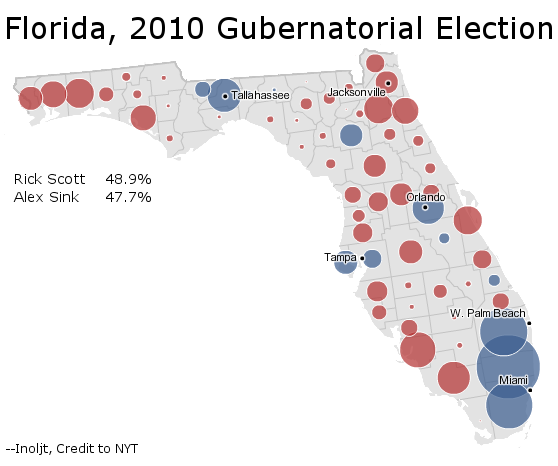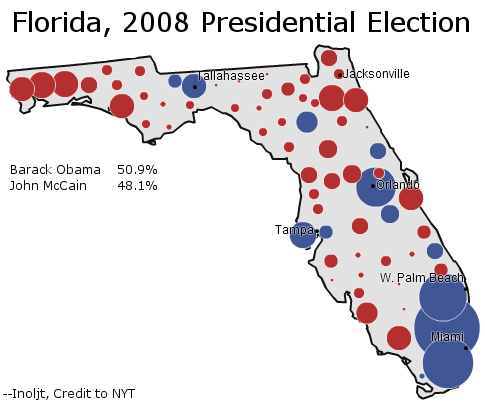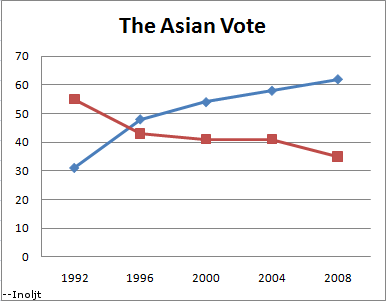• AZ-Sen: Maybe, just maybe, this will be the last time we’ll hear ridiculous speculation about, Joe Arpaio, the thug sheriff of Maricopa County, running for higher office. The 78-year-old Arpaio said he won’t seek Arizona’s open senate seat, following his announcement a few weeks ago that he won’t seek re-election as sheriff, either. I’m wondering if the two developments are not unrelated – Arpaio can silence the senate gossip because he no longer needs to use it to raise money for his next local race. Anyhow, I’ll be glad to be done with this guy. UPDATE: My mistake. I misread a line in the link and thought Arpaio was finally retiring, too – but only Kyl is, unfortunately. Still, Arpaio did say that he will not seek Kyl’s seat.
In other AZ news, what if you threw a teabagger convention and the Republican senate candidate didn’t come? Jeff Flake was a no-show at the Tea Party Patriots’ confab in Phoenix this past weekend, and the ‘baggers seem happy he stayed away. Unlike, say, Maine’s Olympia Snowe, Flake doesn’t appear to be interested in making nice with the nutters. I’m convinced that a more suitable (to the movement conservatives) candidate will emerge.
• FL-Sen, FL-13: Not quite sure what to make of this – John Boehner was just down in Sarasota, FL, headlining a high-dollar fundraiser for a guy who hardly needs the money, super-rich car dealer Vern Buchanan. Is this Boehner trying to convince Buchanan to seek re-election to the House and avoid a throw-down with fellow Rep. Connie Mack? Or just the Speaker earning chits while playing a few rounds of golf during a Congressional recess?
• HI-Sen: This piece on the Hawaii senate race is worth reading in full. The nominal hook here is Sen. Dan Inouye’s comments that, as Chair of the Appropriations Cmte. (and President Pro Tem of the senate), he won’t have as much time to raise money for his old buddy Dan Akaka, who is facing re-election next year. But there are a whole host of other questions implicated here: Is this just Inouye trying to kick Akaka’s ass into gear? (Akaka only has $66K on hand and faced a serious primary challenge from Rep. Ed Case in 2006.) Will Akaka (88 yo in 2012) actually even run again? Is former Gov. Linda Lingle going to run? If Akaka steps aside, who might take his place on the Dem side? Again, click the link to see the state of play.
• ME-Sen, ME-Gov: Eliot Cutler, the independent candidate for governor last year who came in just a couple of points behind the winner (Republican Paul LePage), says he is “unlikely” to challenge Sen. Olympia Snowe, proclaiming he has “no desire to live in Washington.” He also says he isn’t ruling out another gubernatorial bid in 2014. Also, one possible Dem candidate, former AG Janet Mills, just joined a law firm, suggesting she probably isn’t interested in a senate race. (Mills became the first woman AG of Maine in 2009, but because the position is selected by the legislature, she was replaced by a Republican after the GOP swept into power last fall. NB: This is how you avoid Kelly Ayottes.)
• MI-Sen, MI-15: Rob Steele, last seen losing to Rep. John Dingell by 17 points in 2010, says he’s considering a challenge to Sen. Debbie Stabenow (who lacks any real high-profile opposition at the moment). Steele also says he doesn’t think he’ll run again Dingell again, whose district might get re-drawn to still include heavily blue Ann Arbor.
• MO-Sen, MO-02: I thought Rep. Todd Akin had definitively said “no” to a senate bid, but in response to some renewed chatter about a possible run, he would only say: “Some people want to draft me for Senate but you know engineers. It’s just one thing at a time.” You know engineers! Anyhow, if there’s a chance Akin might get in, this could help explain former state GOP chair Ann Wagner’s recent remarks that she might run for MO-02. (Wagner, of course, is also in the mix for the senate race.)
• RI-Sen: State GOP chair Gio Cicione says he won’t take on Sen. Sheldon Whitehouse, citing (like Cranston Mayor Matt Fung before him) the high cost of a race. These guys think a Rhode Island senate race would be expensive? They ought to check things out a state or two to the west. Anyhow, Dave Catanese caught up with former Providence mayor (and well-known felon) Buddy Cianci, whose name surfaced in PPP’s most recent poll of the race. Cianci hasn’t completely ruled out a run, but says it’s not “realistic.” Also of note, PPP has a report card out on Rhode Island politicians’ job approval ratings.
• TX-Sen: Former Dallas mayor Tom Leppert, who resigned just a few days ago, made it official: He’s running for senate.
• VA-Sen: The already-painful Tim Kaine watch – is it a pimple or a boil? – will soon be over: the DNC chair promises he’ll make a decision in a week, according to the AP’s Charles Babbington. (I predict “gummy bear.”) On the other side of the equation, ultra-far-right insano-Republican, state Delegate Bob Marshall, says he’s considering another run. Marshall almost stole the GOP nomination for VA-Sen in 2008 from the super-sad Jim Gilmore, but that near-upset took place at a Republican convention – this time, the party’s nominee will be selected in a primary.
• MO-Gov: Republican Lt. Gov. Peter Kinder says he’ll make an announcement “this spring,” and if it’s anything other than, “I’m running for governor,” I think people will be shocked. Anyhow, mark your calendars – this means Kinder might open his trap again any time between March 20th and June 21st!
• NC-Gov: Since North Carolina is their home state, it looks like PPP will be testing NC-Gov just about every month. Incumbent Dem Bev Perdue trails almost-certain opponent Pat McCrory 49-37. (Last month it was 47-40.)
• CA-36: 2010 and 2006 primary candidate Marcy Winograd announced she’s entering the special election for departing Rep. Jane Harman’s seat. The CW says Winograd is likeliest to hurt SoS Debra Bowen, but I’m not really sure she’s capable of making any material difference in this race.
• CT-05: Former one-term state House Rep. Elizabeth Esty announced she’s running for Chris Murphy’s now-open house seat. Esty (not to be confused with the DIY craft-selling website) narrowly lost a rematch in 2010 after narrowly winning a traditionally Republican district in 2008.
• NJ-06: Teabagger Anna Little, who won an upset primary victory in 2008 but lost to Rep. Frank Pallone by 11 points in the general election, says she’s back for a rematch. The woman Little beat for the GOP nomination last year, richie rich Diane Gooch, is also weighing another bid.
• NM-01: Dem state Sen. Eric Griego says he’d “seriously consider” running for Rep. Martin Heinrich’s seat if Heinrich makes the jump to the open-seat senate race.
• NY-26: Well, that explains that. In other news, Conservative Party chair Mike Long seems to be tipping his hand that his party will in fact support GOP nominee Jane Corwin.
• MO-SoS: MO SoS Robin Carnahan says she’s running for re-election to her current post. Republican state Sen. Bill Stouffer, who lost a primary last year to Vicki Hartzler (who went on to beat Ike Skelton in the general), also says he’ll run for the post.
• Census: Our friends across the pond in England and Wales will take their census this year. What makes this interesting is that for the first time, Britons will be able to submit their census forms online.
Special Elections: Johnny Longtorso has the goods on tomorrow night’s special elections:
After the excitement of last week, this week is a bit of a letdown. There are three seats up: Florida’s SD-33, formerly held by Frederica Wilson, is merely a formality, with the Democrat likely going to win 80-20 or so. There’s also a formerly Dem-held Senate seat in Mississippi, SD-12; despite no party ID being on the ballot, I’m pretty confident in guessing all three candidates running are Dems (it’s along the Mississippi River, so in heavily-Democratic territory). And in Maine, HD-11, an extremely Republican seat, is up. It would be helpful if Dems picked this one up, as the Republicans only have a slim majority in the House, but this was a seat that went 3-1 for the incumbent in 2010. There was apparently a split among Republicans, so there’s a Republican running a write-in campaign, but it would still be one hell of a long shot.






